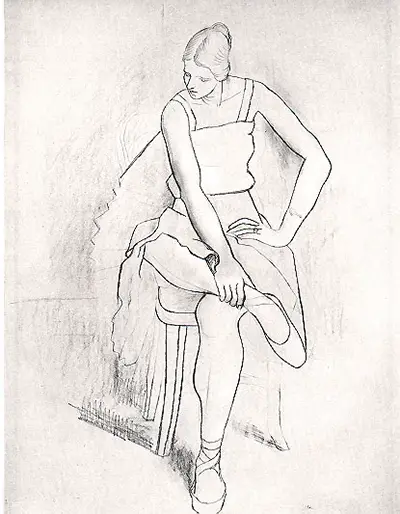Pablo regularly painted the reportedly beautiful Olga. In the early years of their relationship, his work seemed to celebrate her good looks. His work - for a time - became much more realistic than his usual cubist pieces. Picasso entered an era of aesthetic celebration, and the 'Seated Woman Olga' was a part of this collection of work.
In this particular piece of work, 'Seated Woman Olga' is featured in a long portrait, leaning into a decorative armchair. Her face is centred and faces the onlooker, drawing attention to the deep depiction of her eyes. Picasso painted the ballerina with dark features, but art historians suggest that she was actually a red head with green eyes.
It is put forward by some of these historians that the artist saw Olga as a 'female version of himself' and therefore painted her with typically 'Spanish' colourings. Some also argue that the poise of the fan she is holding could be visualised like a paintbrush being held, to reflect Olga as an 'artist' too (but in the form of dance.)
Picasso was known to have fallen quite madly in love with Olga and the glamorous lifestyle that the Russian dance troupe, Ballet Russes, enjoyed.
Olga lived life within high society, and arguably this aided Pablo's own path as a artist- to some extent. Once married, they lived in the fashionable city of Paris together and later went on to have a son, Paulo.
By the 1930s, however, their marriage crumbled as Pablo had an affair with a seventeen year old. During this time, the artist still painted his wife, but his drawings of her returned much more to the cubist style and were quite abstract in tone: some say this was a nod to the relationship, which became fragmented and consequently ended.
Seated Woman Olga, therefore, stands to represent a time when Picasso was very much in love: with Olga; with aestheticism; and with his lifestyle and reality.

